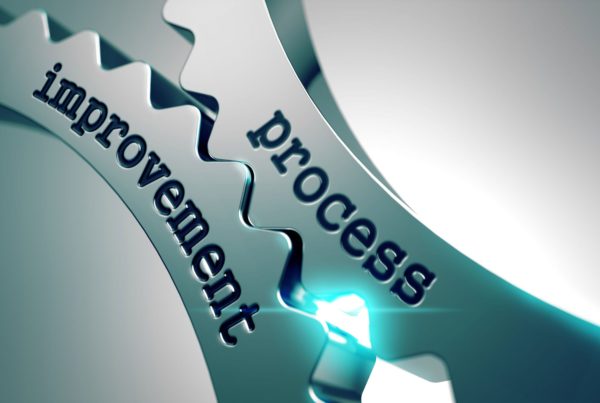What is the goal of a business?
While most businesses have added social and environmental goals to their strategies, the overarching goal of all businesses remains the same: to make a profit.
And to ensure that your firm can extract maximum value from the market, it must pay close attention to how it manages its bottom line. By closely managing the bottom line, you can ensure that your firm is capturing a healthy profit margin, improving its competitive position, and attracting investors.
So how can you go about achieving drastic improvements to your bottom line? Surprisingly, with small changes!
I am talking about the Japanese concept “Kaizen” which literally means “change for the better”, and in business has come to mean continuous improvement. Using this concept, I will be discussing some of the ways you can your efforts to reduce your expenses.
Tune Your Processes to Improve Quality
Quality is king!
One of the main goals in process improvement is to improve the quality of your processes and offerings. You need to remember that defects (non-conforming products) have to be reworked or scrapped, which is pure waste in terms of resources. If you can identify ways to reduce the waste that is generated from producing defects, you will be able to make a direct improvement to your bottom line.
Improving the quality of your processes also has another meaning; increasing their repeatability and reliability. This allows your processes to be more consistent and predictable in the resources they require and the results they provide.
If you can reduce defects and improve your first-pass yield (the ability to produce a product that meets your requirements in one try without the need for rework), you will be better able to predict the time and resources required to produce a product or service. What this equates to is tighter control over your costs, inputs, and outputs, allowing for better resource planning, budgeting, and forecasting. More consistent processes provide you with the opportunity to have better insight into costs and margins.
Always Think About Reducing Waste
One of the biggest sources of waste is overproduction, and that is why we must always strive towards “pull manufacturing” which means producing only what is needed according to demand.
Traditional “push manufacturing”, focuses on producing large batch sizes, using a “build it and they will come” mentality. The mindset was that large batches help to break down overhead expenses and reduce the cost of production, however, they also require a significant amount of inventory to be stocked (Raw Materials, Work in Process Inventory, Finished Goods). This excess inventory ties up capital and has direct costs such as land and warehousing, and indirect costs such as handling, storage, and shrinkage associated with it. These costs increase your overhead expenses and reduce your ability to extract maximum value from each sale. Reducing the amount of inventory carried will have a significant impact on your bottom line, and it ensures that your dollars aren’t tied up in a non-value producing state.
Apart from inventory, we look at reducing or eliminating 10 types of process waste:
- Work Area Layout or Movement
- Rework
- Unnecessary Process Steps
- Over-Production
- Waiting for Work
- Ineffective Current Systems
- Poor Planning
- Lack of Expectations
- Lack of Assignment
- Skills
For a case study on Porsche, about reducing inventory and freeing capital, click here.
Improve Your Responsiveness and Deliver on Your Promises
Your customers want to know you appreciate them. If they are unhappy with the service they receive, they will not remain your customer for long. And given a free market, why should they?
One of the most important ways you can ensure your customers are satisfied with the service they receive is to respond to their needs in the shortest possible time. This concerns every single process that is in contact with your customers. To be successful in this endeavor, you need to ensure that your processes have the shortest possible lead times (the time required to get tasks done).
If you can reduce the lead time of your processes, your will be better positioned to respond to the needs of your customers and increase your turnaround times, freeing up invaluable capacity to take on more customers. As you better serve your clients, you will attract more orders and further increase your revenues. And as your volumes increase, you will achieve greater economies of scale and further reduce your costs.
Pay Attention to Your Inputs
Apart from your processes, you will need to pay close attention to the inputs you are using, whether you are in a manufacturing or service-based environment.
In manufacturing, we focus on the raw materials or assemblies we are purchasing from suppliers to ensure that they meet quality requirements, purchased from sources close to their point of use (lower transportation costs, smaller order quantities, more responsive to demand, etc.). Overall, we need to develop a systemic viewpoint that considers various factors such as quality, distance, and responsiveness to select the most optimal sources. And to do this, we need to empower everyone within purchasing and procurement roles to understand the direct impact of their work on the bottom line. Your purchasing strategy is vitally important as it directly affects all downstream processes and decisions.
Within a service-based environment, your people are also your raw materials. Therefore, ensure that you are investing constantly in their training to make your resources more capable and robust so that they can complete processes more quickly and consistently with a high first-pass yield.
Paying close attention to your inputs allows you to set up your downstream processes and interactions for success to produce the best possible results without a negative impact on your bottom line.
Improve Efficiencies Across the Board
To tie everything together, we are only as strong as the weakest link in our chain.
That is why it is important to ensure the involvement of your entire organization in continuous improvement efforts. The thinking of the entire organization needs to change and continuous improvement principals need to be embedded within your strategy and culture.
All processes within your organization are important as they will interact with customers or support other resources to carry out their work. Therefore, everyone needs to be involved in improvement efforts to ensure that your business is running like a fine-tuned machine.
Businesses that highlight the importance of continuous improvement and employee empowerment see an increase in employee engagement, capabilities, and retention. They are also able to attract and recruit stronger candidates with lower search and hiring costs. Overall, these businesses are left with more skilled workers that can better contribute to the goals of the organization, improving performance, and reducing costs throughout the system.
I hope that this article has helped to shine some light on the value of continuous improvement, and I would love to hear some of your thoughts and experiences on how organizations can use incremental changes to improve the performance of their business. If you’re looking to make some incremental changes to jumpstart your own business improvement and are unsure of where to start, I’d be happy to discuss this with you, too. Please feel free to reach out below.
[contact-form-7 404 "Not Found"]







